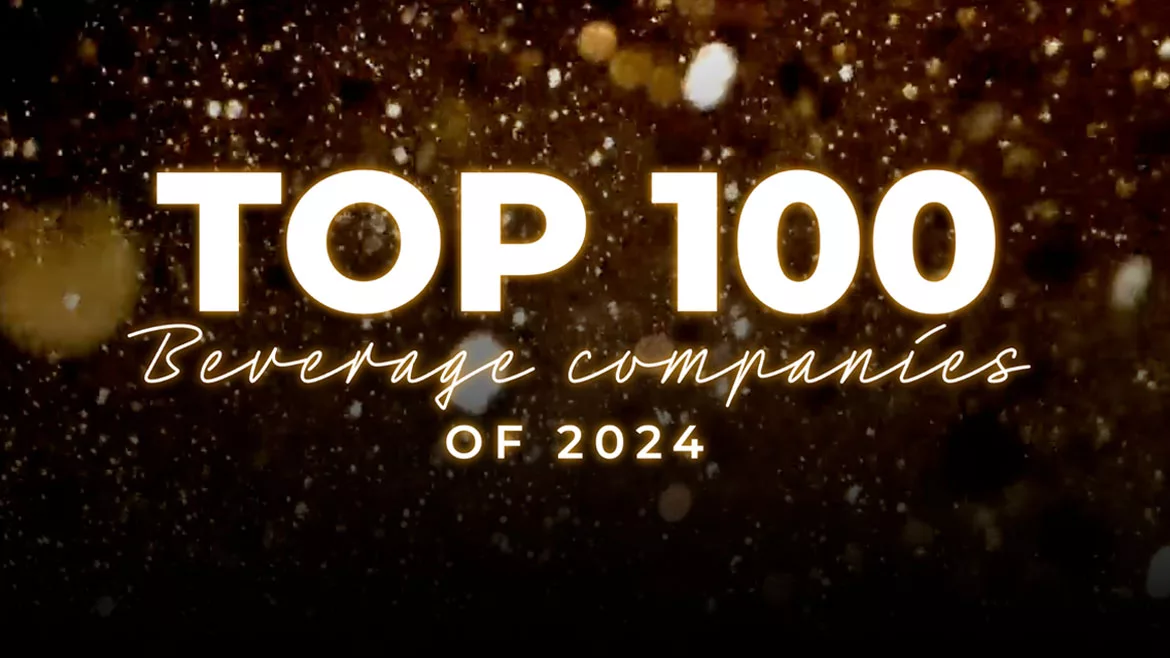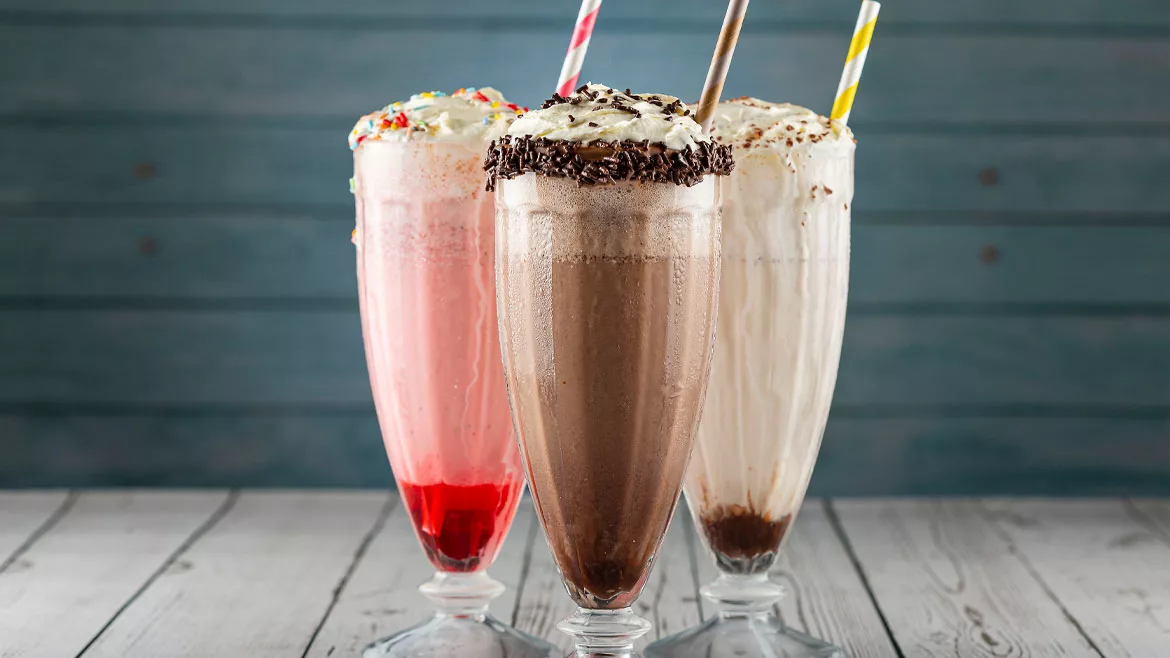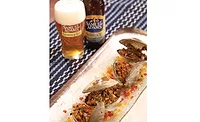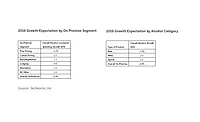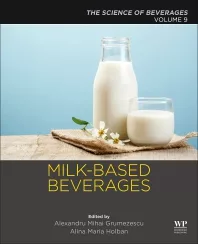IRI study highlights cross-generational interest in alcohol beverages
At-home consumption outperforms on-premise
Chicago-based Information Resources Inc. (IRI) announced results from its study analyzing the habits of U.S. consumers regarding alcohol beverages. Although drinks of choice differed among generations, consumers — from millennials to seniors — continue to indulge in beer, wine and spirits products with regular frequency at home and on-premise, it reports.
This regularity creates an immense opportunity for beverage alcohol manufacturers to engage with shoppers while in the store and to find new pockets of growth, the market research firm adds.
Today’s consumers consistently drink in restaurants, bars and at home. Drinking at home outperforms drinking on-premise across all generations: Between 66 and 76 percent of consumers reported drinking at home at least once a week, compared with 23 to 26 percent who reported drinking once a week on-premise, it says.
Millennials, Generation Xers and baby boomers make in-store shopping trips more than once a week, and 40 percent of buyers walk into the store undecided on what product to purchase. Of the 60 percent with a planned beverage purchase, 21 percent end up changing their mind in store, and 50 percent of those who changed their mind ultimately buy a different brand than they originally intended, IRI reports.
“There is sizable interest for beer, wine and spirits manufacturers and retailers to work together to win over consumers,” said Robert I. Tomei, president of Consumer & Shopper Marketing for IRI, in a statement. “When you consider how often most shoppers are going to the store, and the fact that 21 percent of them changed their mind during the actual shopping trip, you realize the impact in-store signage, creative labeling and other marketing could have on your portfolio.”
Consumers across all generations also value quality and taste more than price. More than half of all consumers, regardless of their age, view premium beer, wine and spirits as an affordable luxury, the market research firm reports. Similarly, between 73 and 80 percent of all generations make their adult beverage decisions based on taste rather than price. Beer continues to reign at home overall, with 73 percent of younger consumers preferring it to wine or spirits, it adds. However, consumers in all generations are looking for lighter alternatives across the entire alcohol beverage landscape, demonstrating the possibility for existing brands to expand their portfolio and appeal to new demographics.
Leveraging the generations
Although millennials increasingly are representing a more significant portion of dollars for the alcohol beverage category as they become of age, manufacturers and retailers should not discount the role of other generations. Baby boomers — an almost equally large and arguably more economically powerful generation than millennials — are responsible for a disproportionately large proportion of overall cross-category dollar sales. Although they only make up 33 percent of the U.S. population, boomers represent 45 percent of overall beer, wine and spirits dollar sales, 46 percent of wine sales, and 41 percent of sparkling wine sales, IRI reports. Although it is important for manufacturers to develop a strong and sustainable core connection with the millennial generation, they also should nurture the relationship with boomers, given that they account for nearly 50 percent of category volume.
Beer, wine and spirits companies also should pay attention to Generation Xers, whose preferences, values and tastes are similar to those of millennials, IRI explains. Generation X makes up 20 percent of total beer, wine and spirits dollar sales, a figure proportionate to their makeup of 21 percent of the U.S. population.
Millennial and Generation X consumers are the most experimental in the type of alcohol they choose and enjoy trying different kinds of alcohol beverages, both at home and on-premise. At the time polled, Generation X consumers averaged 3.6 different types of alcohol at home in the past three months and 2.8 on-premise, figures higher than those for boomers and seniors, IRI reports.
Both millennials and Generation Xers also prefer bars and restaurants that put a creative spin on the alcohol drinks they serve, and they are the most willing to try the latest trends. Aesthetics are also important, as one-third of both generations choose a product based on what the label or bottle looks like.
In order to effectively target the right audience, beer, wine and spirits manufacturers need to understand the inherent differences between each generation’s wants, needs and preferences. Regarding the alcohol beverage segment, millennials are driven largely by factors, such as alcohol percentage and flavor innovation — they want the most “bang for their buck” and crave new flavor combinations and experiences. Millennials also are highly attracted to creative labeling, citing fun and engaging labels as a criteria for an in-store purchase decision, IRI reports. Boomers, on the other hand, are less likely to crave variety and experimentation, and their purchase decisions are more likely to be influenced by a low price point than by beverage taste. They also are less likely to purchase alcohol in a restaurant or bar, it adds.
Currently, many consumer packaged goods companies are extremely focused on millennials, to the extent that they unknowingly might be neglecting Generation Xers and baby boomers. In doing so, they are walking away from an enormous portion of consumers’ dollars, IRI states. For instance, boomers remain more likely than millennials and Generation Xers to drink once a week or more at home, and they account for a robust 42 percent of overall wine category growth.
As part of a detailed industry study, Chris von der Linden, senior vice president of Consumer & Shopper Marketing and beverage industry expert for IRI, noted: “Millennials also have a large exploratory nature, which is reflected in the choices they make in restaurants and bars, choosing domestic craft beer or vodka most often — 37 percent and 33 percent of the time, respectively. With a mantra to ‘Celebrate the Everyday,’ Champagne is also a frequent beverage choice. During a three-month period, millennials drank two times more Champagne than any other generational cohort.”
Additionally, 60 percent of millennials state that Champagne is great for drinking year-round. Of those millennials who indicated they had consumed Champagne in the last 12 months, 41 percent polled said that they had drank Champagne in the past month and 23 percent in the past week, IRI reports. Champagne and sparkling wine manufacturers that capitalize on this trend and sentiment within the millennial population could see a substantial impact on sales.
However, millennials are not a one-size-fits-all generation. IRI has identified six distinct segments within the millennial population, each of which has its own identity and ideals: free spirits, struggling wanderers, concerned aspirationalists, conscious naturalists, new traditionalists and confident connectors. To effectively engage the right group, beer, wine and spirit producers, retailers and on-premise establishments must be aware of their differences in philosophies and values and target them in ways that will be most meaningful. IRI MilleniaLink helps marketers assess which millennials offer the greatest opportunities for their products or services, why, how to reach them and what messages will resonate most strongly.
Looking for a reprint of this article?
From high-res PDFs to custom plaques, order your copy today!
